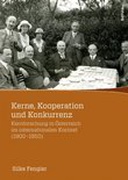Explore

Kerne, Kooperation und Konkurrenz
Wie veränderte sich die Radioaktivitäts- und Kernforschung in Österreich seit der Entdeckung des Kernzerfalls im späten 19. Jahrhundert bis zum Ende des Zweiten Weltkrieges? Dieses Buch bietet eine profunde Analyse lokaler Forschungstraditionen im politisch-sozialen und wirtschaftlichen Kontext. Die Studie verortet das Institut für Radiumforschung in Wien und andere österreichische Standorte der Radioaktivitäts- bzw. Kernforschung in zwei sich überlagernden Netzwerken: Einerseits im regionalen Forschungsraum der Habsburger Monarchie, der Ersten Republik und des „Dritten Reiches“ und andererseits in der globalen Gemeinschaft der „Radioaktivisten“. Sie zeigt anhand neuer Archivquellen, welche Rolle die in Österreich vorhandenen Ressourcen im globalen Netzwerk der Kernforschung spielten.
This book is included in DOAB.
Why read this book? Have your say.
You must be logged in to comment.
Rights Information
Are you the author or publisher of this work? If so, you can claim it as yours by registering as an Unglue.it rights holder.Downloads
- 99 - pdf (CC BY-NC-ND) at OAPEN Library.
- 93 - pdf (CC BY-NC-ND) at OAPEN Library.
- 173 - pdf (CC BY-NC-ND) at OAPEN Library.
Keywords
- History
- history of science
- Humanities
- Institute for Radium Research
- Kalter Krieg
- Kernforschung in Österreich
- Kernphysik
- National socialism
- Nationalsozialismus
- nuclear research in Austria
- Radioaktivität
- Radiuminstitut
- The Cold War
- thema EDItEUR::N History and Archaeology::NH History
- Wien
- Wissenschaftsgeschichte
- Wissenschaftskooperation
Links
DOI: 10.26530/oapen_470590Editions

